Looking for another entertaining, educational thing to do during your stay-at-home confinement? Here’s a list of favorite space images, collected by an astronomer — me — passing the time in isolation, like everbody else.
Seeing Saturn with Super-Vision
The vision of NASA’s Cassini spacecraft shows us Saturn in a light that human eyesight can never perceive. This false-colored visual-and-infrared composite paints the gas giant in color-coded temperatures, including a dazzling crown of auroras, shown in green, rising 600 miles above the cloud tops of Saturn’s southern polar region.
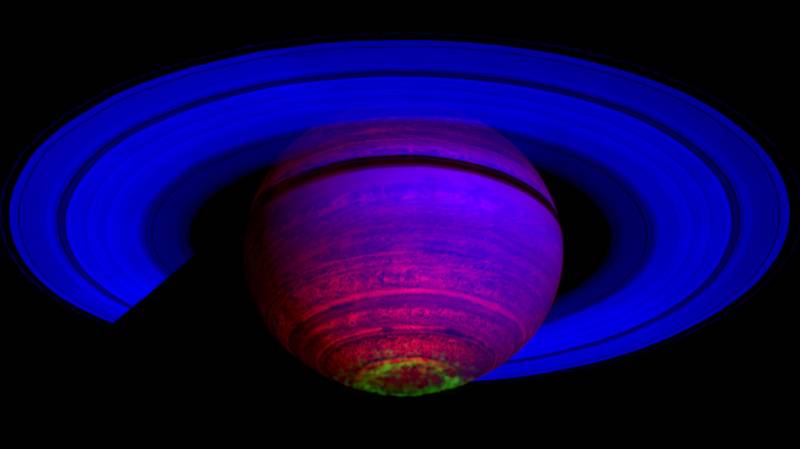
Gullies on the Walls of Mars Crater
What may look deceptively like water-carved gullies running down the sandy slopes of Russell Crater on Mars are likely caused by the seasonal thawing of carbon dioxide ice instead. Multiple images of this spot taken at different times in the planet’s seasonal year reveal that these channels form in the Martian winter, when water ice is still frozen, but the more volatile carbon dioxide could be able to flow in some way.
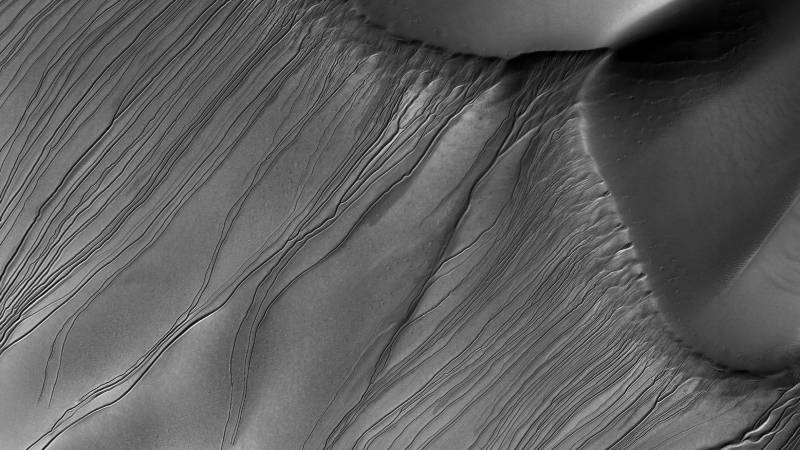
‘Swiss cheese’ Terrain at Mars’ Southern Polar Ice Cap
Smooth patches of carbon-dioxide ice rise 10 meters above surrounding blob-shaped depressions. This is another of Mars’ unearthly artforms made possible by seasonal temperatures low enough to freeze carbon dioxide from the thin air, which is eaten away as the season warms to form pits and other spectacular features.
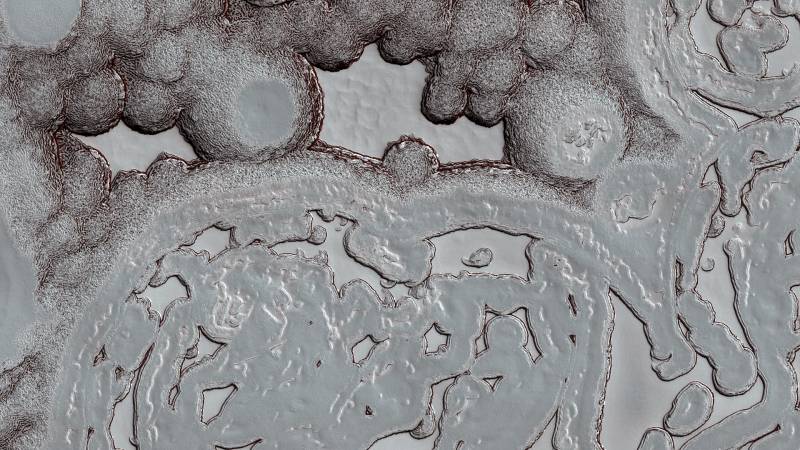
Jupiter’s Masterpiece of Motion
The restless and complex cloud tops and deep atmosphere of Jupiter give Earth’s best artists some serious competition. Wrapped around a circular storm cell, an atmospheric jet stream stirs up magnificent and mind-bending swirls, eddies and vortices for us to behold through the eye of NASA’s Juno spacecraft.
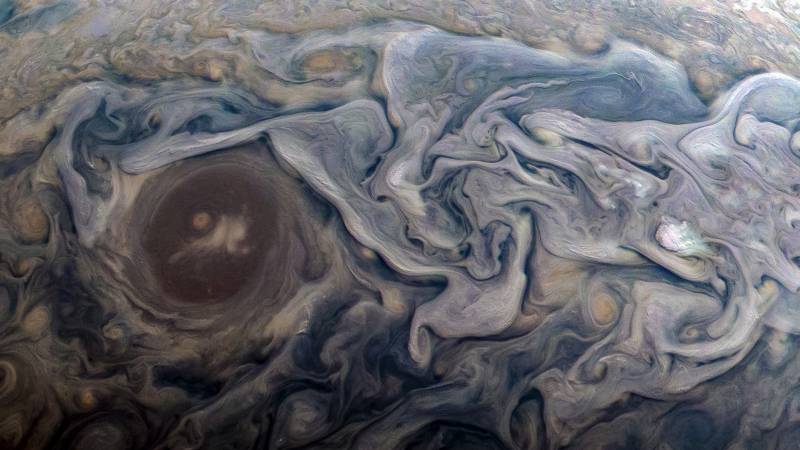
Sunset on Pluto
Fifteen minutes after its closest approach to Pluto, NASA’s New Horizons spacecraft took this image, capturing smooth icy plains and some of the dwarf planet’s mountain ranges. The layers of Pluto’s thin, hazy atmosphere are backlit by the near setting sun.
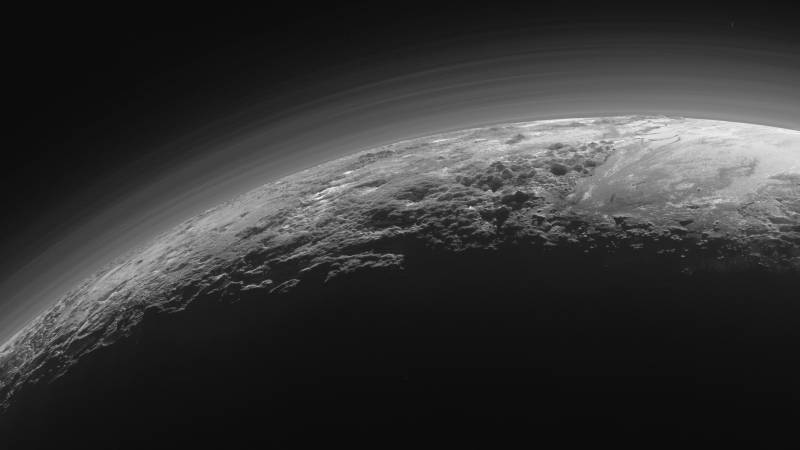
Curiosity Snaps a Selfie
NASA’s Curiosity rover paused to take this selfie on Feb. 26, 2020, before turning to climb the ridgeline of crumbling rock seen here in the background. Curiosity is alive and well and continuing its climb up Mount Sharp, in Gale Crater, investigating the geology for clues to Mars’ climatic history, and if the planet was ever capable of supporting life.
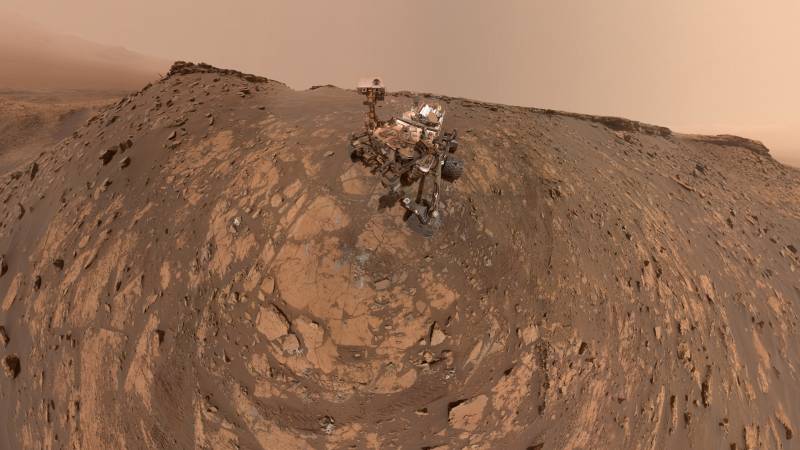
Crab Nebula: Supernova Remnant Fireworks Burst
A supernova observed and recorded by Chinese and Japanese astronomers in A.D. 1054 marks the spot in the sky that telescopes later discovered the Crab Nebula, a cloud of hot gas expanding outward and dissipating into space. By virtue of that ancient observation, the Crab is the first supernova remnant whose parent star’s explosion was witnessed by human eyes. Below, images captured by different modern observatories were combined to form this stunning composite. A high-resolution visual image captured by the Hubble Space Telescope is layered with a radio image from the Karl G. Jansky Very Large Array and an X-ray image from the Chandra X-ray Telescope.
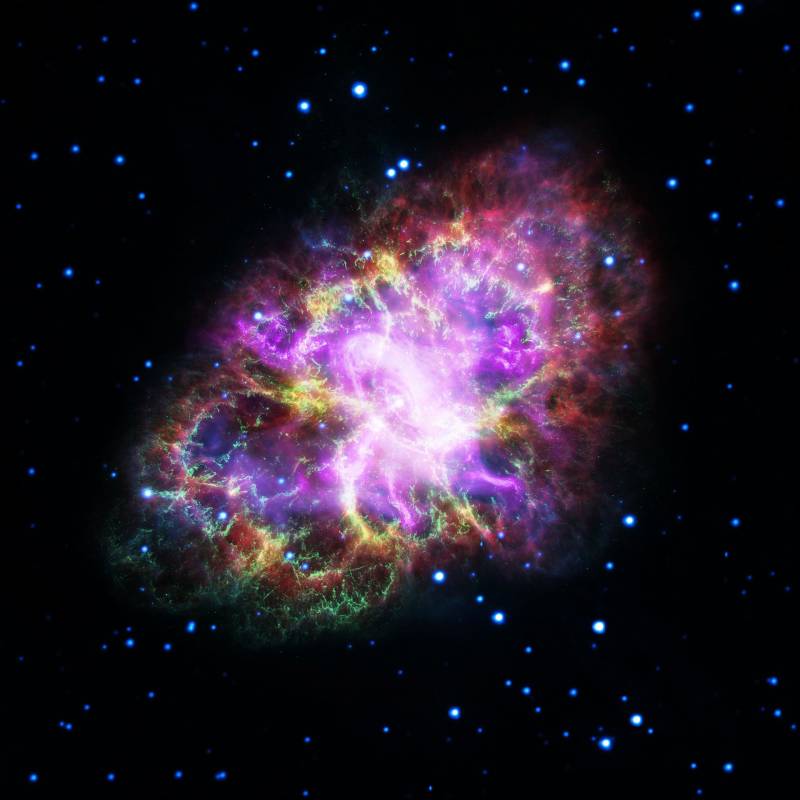
Sweeping View of the Cosmos
The Pan-STARRS observatory at the summit of Haleakala on Maui, Hawaii, produced this mosaic map of every part of the sky viewable from the observatory’s latitude, combining a half-million images into one extraordinary view. Contained within this image are over 800 million celestial objects, including the ghostly sweep of the Milky Way galaxy’s stars and an obscuring disk of gas and dust.
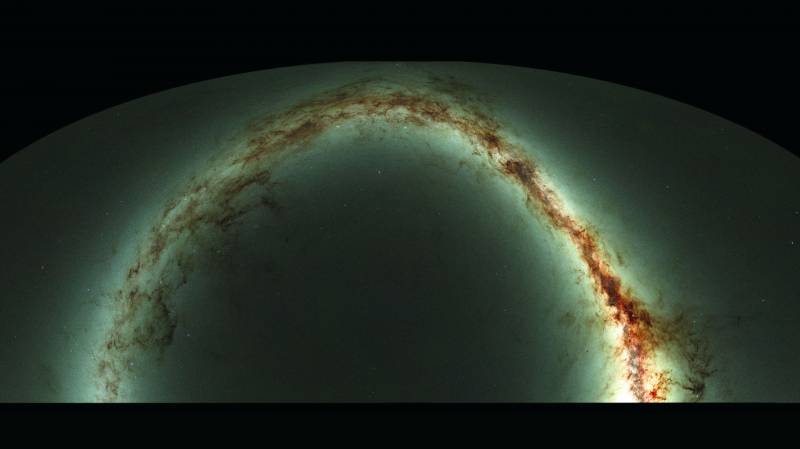
Crater on Far Side of Moon
Always hidden from Earth’s gaze, located on the far side of the moon in the southern polar region, is Antoniadi Crater, an impact crater 80 miles in diameter that resides in a much vaster depression. This picture, taken by NASA’s Lunar Reconnaissance Orbiter, captures one end of Antoniadi from an oblique angle. The crater wall sweeping across the background rises almost 2.5 miles above the floor, and the “little” crater in the foreground would engulf the city of San Francisco. Fun fact: The bottom of the small foreground crater contains the lowest point on the moon’s surface, about 4.75 miles below mean surface level.
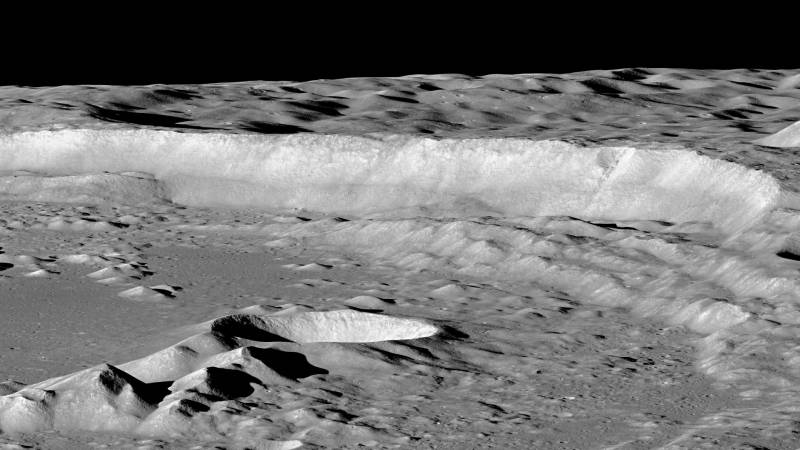
Lunar South Pole Illumination Map
This unusual looking picture of the moon’s south pole is a composite map made from images taken every two hours over a full lunar day (about four weeks on Earth). The brightness of each pixel tells how much sunlight that spot receives in the course of the moon’s day, white representing the most sunlight and black where sunlight never falls. Here at the moon’s south pole, the sun never rises far above the horizon, and sunlight shines across the landscape at a grazing angle. The black areas show places of permanent shadow, where observations have confirmed the presence of water ice.
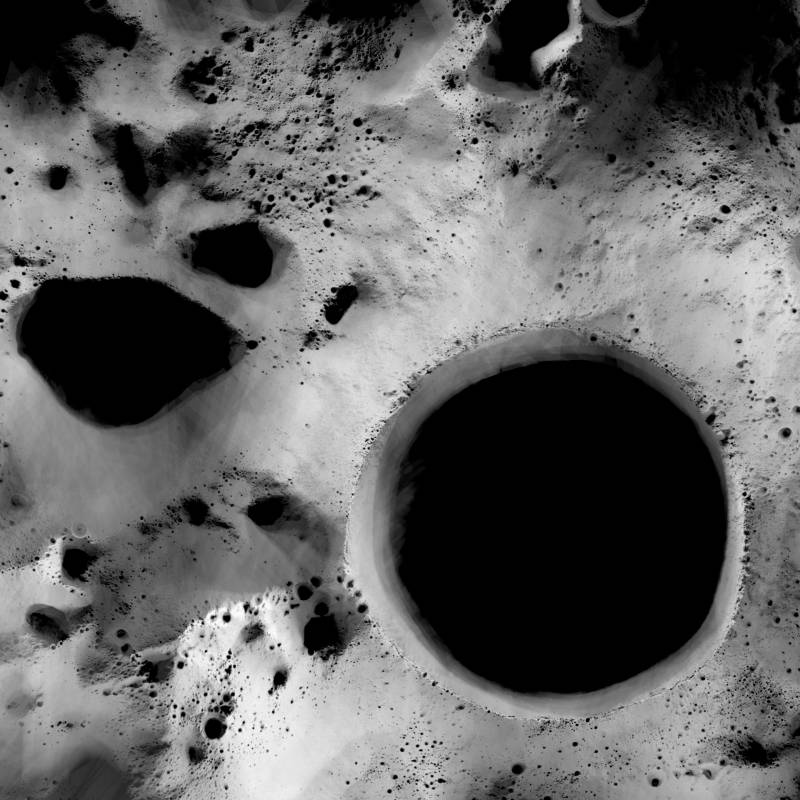
Find Your Favorite
The multitude of captivating, awe-inspiring, and just plain run-of-the-mill stunning space images available online is nothing short of astronomical. Browse their image galleries in search of your own collection of faves; you’ll soon find your hours of isolation melting away in breathtaking wonder.
Benjamin Burress has been a staff astronomer at Chabot Space & Science Center since July 1999. Before that he served on the crew of NASA’s Kuiper Airborne Observatory at Ames Research Center in Mountain View, California, and was the Head Observer at the Naval Prototype Optical Interferometer program at Lowell Observatory in Flagstaff, Arizona. He has written over 300 pieces on astronomy and space exploration for KQED since 2007.
